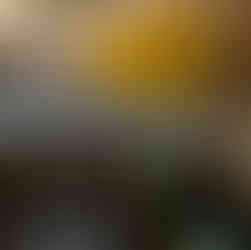DOMA Coffee Roasting Company
- kate
- Sep 29, 2016
- 2 min read
Updated: Nov 6, 2020
"Coffee is not Country Time Lemonade."
My roommates and I signed up for a class at a local coffee roasting company called DOMA, in Post Falls, Idaho. The topic of the class was manual coffee brewing and involved sampling under-extracted, over-extracted and perfectly brewed coffee from several different manual brewing devices including:
Chemex
Melitta Dripper
Kalita Wave
French Press
Aeropress
My main take-away message from this class is that I really know NOTHING about coffee even after growing up in Seattle for my entire childhood. This was one of those great moments that everyone needs to experience here and there in life when it becomes apparent how many things are unknown about a subject. Furthermore, even after sitting through a 2 hour class on this topic, I don't even have the language and vocabulary to be capable of explaining or even summarizing the science and technique behind manual coffee brewing.

DOMA is not located in a central location near downtown or many shops. Many local coffee joints and mom&pop grocery stores may sell DOMA coffee, however, it wasn't until I walked into the store to purchase their coffee as a gift that I realized how cool this place is. The space is not only a shop to sell coffee, chocolate, tea and brewing equipment but also a place that fosters community education and involvement. DOMA offers several classes for upwards of 2 people in basic manual brewing and espresso, latte art, and gaining knowledge of the journey from seed to cup. DOMA also promotes continued education for baristas wanting to advance their skills and experiment with the equipment in-store.


Some fun facts that you may not have known about coffee:
Light roasted coffee naturally has more caffeine than dark roasted coffee.
In addition to light roasted coffee having more caffeine, it is less soluble than dark roasted coffee. When brewed appropriately, light and dark roasted coffee may have the same caffeine levels despite differences in solubility (meaning it all comes out in the wash).
Caffeine is essentially developed by the bush of the coffee bean as a natural way to repel bugs.
When manually brewing coffee, always pour water from a goose-necked kettle versus a normal tea kettle in a concentrically circular motion as you have more control of the amount of water reaching the coffee bed at any given time.
Prior to placing coffee grounds in the filter, "wet" the paper filter with some of your boiling water from your goose-necked kettle. This will eliminate a papery taste and secure your filter where it needs to be in the manual brewing equipment.
Alan Adler, who invented the aeropress in 2005, also invented the Aerobie frisbee in 1984.
To make a primo cup of coffee, use a 1:16 coffee brew ratio, meaning 1 part coffee to 16 parts water.
Consider the source of your water used for coffee; strive to use filtered water due to varying levels of harsh minerals in tap water.
Water boils at lower temperatures at higher elevations, and it just so happens that North Idaho is at a naturally perfect elevation for brewing coffee as it boils at 207 degrees (the temperature recommended for manual coffee brewing).
A good cup o' Joe will get better as it cools, being less astringent and bitter.

September 2016









Comments